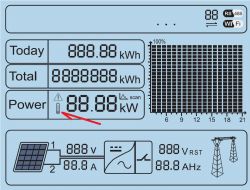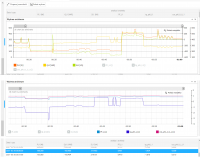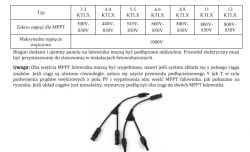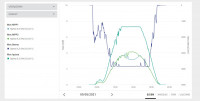3301 wrote: 1. The lower the active power production, the more the inverter produces reactive power with the sign "+"
So you have an inverter not fully compliant with the Polish standard, at least at this point (in the power range of 20-50% of available active power, the micro installation works only as an active power source). My inverter shows exactly this relationship.
3301 wrote: 2. The inverter aims to achieve a power factor close to 1, so it automatically compensates for the reactive energy it produces.
It does not compensate for anything if it is not already producing as above. And again you have not read the technical conditions because the inverter does not always go to PF1. It depends. Since PF = 1, the inverter produces ONLY active power, it does not compensate for anything, if you set PF = 0.8, the inverter will produce 80% of active power but also 20% of inductive reactive power. For obvious reasons, playing a PF other than 1 means production losses as understood by the prosumer. Of course, by force or stubbornness, you can call it some kind of defective compensation, but without knowing what you are doing and measuring, it usually always ends up badly. The inverter is not used to compensate for reactive power, it is enough that it does not produce it. And when it produces as little as possible. In addition to PF, you can also set the characteristics, this is standard for the selected standard, hence it is so important to correctly set the standard of the country in which the inverter works.
3301 wrote: 3. The assumptions of the OSD are in IRIESD and the installed inverters have the appropriate certificates, but unfortunately they also produce garbage.
Good equipment has to be assembled.
Decide that the inverter compensates or just doesn't produce reactive power because you don't understand yourself either

Another thing is that you did not provide what you measure it, when again with some Chinese invention, I am not surprised either.








